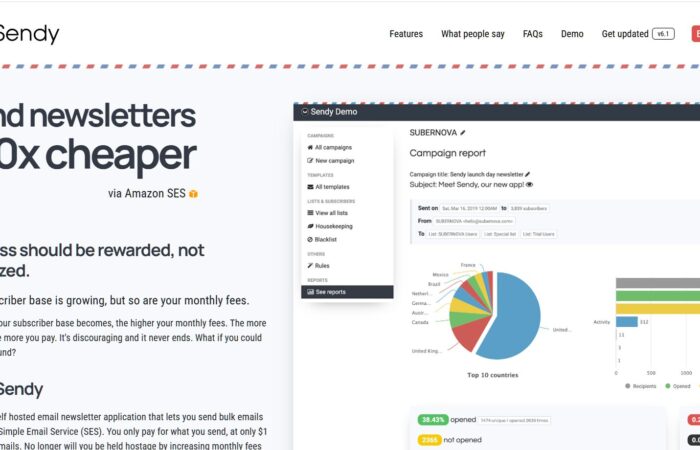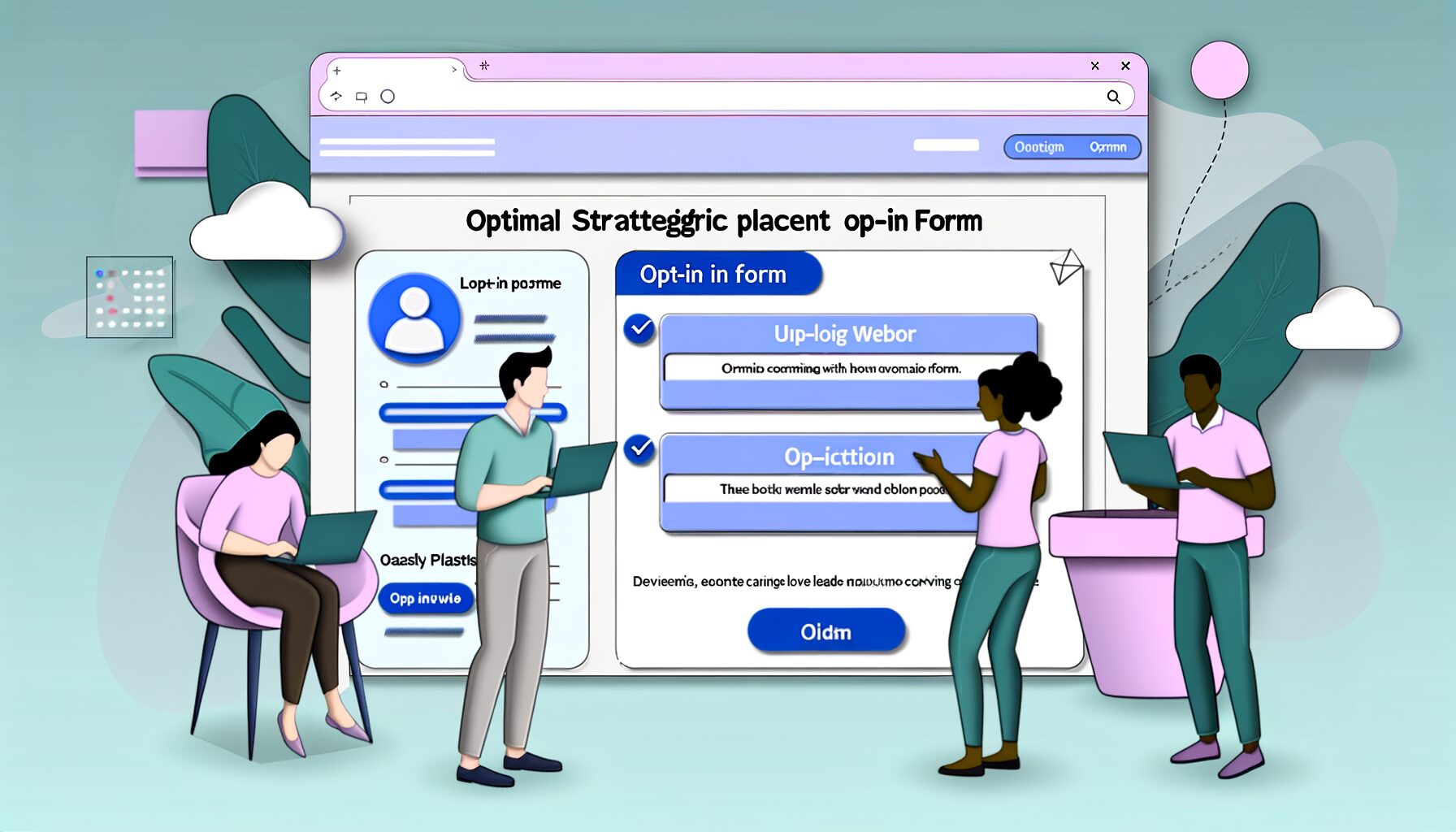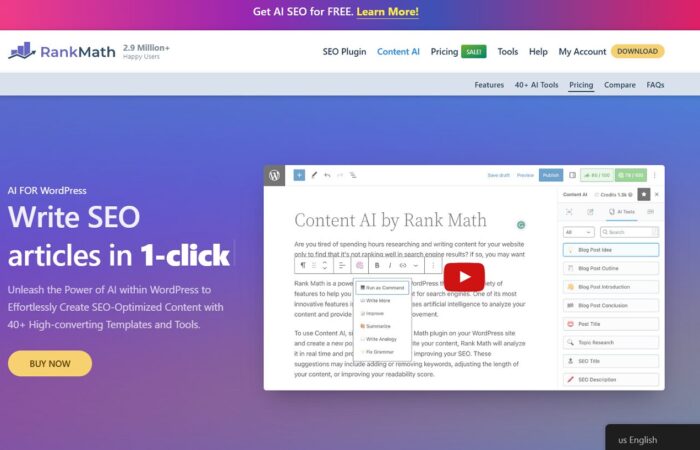Introduction to Email Marketing: Sendy and Paid Services
If you’ve been thinking about Email Marketing, whether you’re a small business owner or a marketing dol guru, you know it’s all about connecting with your audience. The good news? You don’t need an extravagant budget to start seeing some real results. In today’s chat, we’ll cozy up with two different routes you can take: a smart, self-hosted platform named Sendy and the varying traditional paid email marketing services out there.
I know, choosing between self-managed options and paid services seems a tad overwhelming, but don’t worry—we’re here to break it down! Grab yourself a cup of coffee, and let’s delve into the quirky and fascinating world of inbound emails.
Laying the Groundwork: What’s “Email Marketing” Mentioning?
Think of email marketing like sending out digital invitations to your shop (or online platform). It’s a compelling way to keep your community in the loop, enticing customers with not just updates, but also personalized offers and news that resonate with them.
Sendy vs. Paid Services: Setting the Stage
Here’s a quick scoop:
- Sendy: This is a mighty fine option if you’re a hands-on type. Imagine having your own private mailing system that runs on your web server. Pretty cool, right? No need to fork out a myriad of cash, and yet, you still drive the same powerful campaigns as the heavy hitters in email marketing. With Sendy, ramp-up times and teaser campaigns come to life for a whole lot less.
- Paid Services: On the flip side, there are the fully-managed, paid email marketing platforms. They handle all the tech-y stuff so you don’t have to! Think popular names like MailChimp, Constant Contact, and Campaign Monitor. Such platforms can be beachy-keen if you’re looking for out-of-the-box solutions with lots of extras.
But what makes Sendy such a beloved contender or when should you potentially fork out for a paid service? Ooh, the suspense, right? Hold tight.
On an Ending Note
Whether you’re rooted/rooting for physical fliers or aiming a cannon-full of campaigns on the vastness of the Internet, efficiently managing your email marketing strategy doesn’t have to empty every jar at home, nor does it demand you be a certified geek — options abound!
On that note, we’ve just skimmed the surface here, providing you a curtain raiser on your potential email dancing partners – Sendy or the plethora of paid services. Each offers its trunk full of trading tricks. Just hang about as we untack and elaborate these packs more profoundly through our discussion!
Understanding Sendy: How It Works and Setup Essentials
Jumping straight into the meat of things, Sendy is a self-hosted email marketing tool that acts like a charming powerhouse for sending out bulk emails on the cheap – something that’s constantly on the wish list of most small business operators and marketers. But how does it really work, and what do you need to get started? Let’s break it down.
How Sendy Works
At its core, Sendy uses your server or hosting space to run. This means you’ll be setting it up on your own web server. Sendy collaborates closely with Amazon’s Simple Email Service (SES), renowned for its capability to send emails in huge numbers for remarkably low costs – we’re talking $1 for 10,000 emails!
Sending emails with Sendy is a breeze once configured with Amazon SES. It’s essentially about creating campaigns in Sendy’s sleek interface, adding your email list, designing your emails, and clicking send. Over on the Amazon SES side, they take care of delivering those emails by the thousands without blowing a cannonball through your wallet.
Setup Essentials for Sendy
Getting started with Sendy isn’t rocket science, but it does require your attention to a few particulars:
- Hosting and Domain: You’ll need a reliable web hosting service that supports PHP and MySQL. Plus, you need a domain or subdomain where Sendy will reside.
- License Purchase: Grab a license from the Sendy website. It’s a small initial investment that frees you from monthly subscription shackles.
- Setting Up Amazon SES: You’ll sign up and verify your Amazon SES account. This includes steps like confirming your domain, setting SPF and DKIM in DNS settings for better email deliverability, and moving out of Amazon SES’ sandbox environment to send emails unrestrictedly once proved not to be another spam-source.
- Integration: Link up Sendy with Amazon SES by entering needed APIs and credentials in Sendy settings. Given sweetly by Amazon, these elements make sure your emails shoot out fast and land cleanly in inboxes (and not get swayed toward spam folders).
- Email Lists and Campaign Running: Add your email lists (mind the laws around opt-in!), create your campaigns using built-in tools or HTML if you fancy handling code, and prep for clicking ‘Send’ – that heavenly little button that fuels your campaign’s liftoff!
Setup may require a bit of tech comfort, sure, but once over this hump, it opens up channels to large-volume emailing freedom without recurring costs pinching your budget. And should you not be a control side connoisseur, there’s always the option for paid setup support which ensures a smoother onboarding.
For your bonding session with Sendy, remember – it’s about setting up something robust and helping your emails find countless gateways at notably low expenditure. You’re now harnessing the powerful but cost-effective wave of independent email marketing—simple steps away from potentially defining your messaging welcome to many more inboxes.
Tips for a Smoother Sendy Setup
Here’s a lil’ sprinkle of advice as you get comfy with your Sendy setup:
- Documentation is Your BFF: Dip into the documentation of Sendy for all pressing questions or ambiguities.
- Patiently Pursue Amazon SES Limit Increases: Don’t let slow rollout agitate you; compromises in email quality to rush the levels can disrupt deliverability integrity.
- Always Test: Configure sending a few test emails before pushing the campaign live. Better safe with a few trials than sorry with many unsubscribes!
Welcome aboard! You now possess the intel you need to tweak, optimize, and enjoy emailing massa with Sendy running brilliantly by your side. Best of luck casting those digital messages far and wide!
Overview of Popular Paid Email Marketing Services
If you’ve been smashing your head into the virtual wall trying to choose the absolute best paid email marketing service, you’re in luck today! This zoo of premium choices comes with features,functionalities, and flamboyance—at price points that could either make you smile or cringe. Let’s mesmerically meander through some major players in the arena.
MailerLite: Easy, Modern, and Cost-Effective
MailerLite is the sleek racecar in the industry — quick, slick with a robust engine under the hood. Known for its super-friendly user interface and competitive pricing, it’s a choice beloved by beginners and cherished by budget-tight businesses. Highlights include sharp templates, drag-and-drop editor, and excellent customer support, all swaddled in an uncomplicated yet powerful dashboard.
Mailchimp: The Dominant Forebear
Aaaah, Mailchimp. This old giant hasn’t slowed down, handedly leading with its advanced set of features, from complex audience segmentation to Ecommerce-focused integrations. Their platform gives you insights deep enough to base your tenure on, yet it may come at a price that makes newer businesses squint a bit.
Constant Contact: User-friendly with Solid Support
If you’re thinking old school trustworthy, knock on the door of Constant Contact. Spot-on with impeccable support and onboard resources, plus functionalities like social media integrations and automation tools, it’s crafted to aid small businesses to unfold their wings expansively. Yet, affordability can sway depending on your subscriber list.
ConvertKit: Favored by Creators
Always dreamt of treating your subscribers as part of a selective cult? ConvertKit could deck out your dreams in reality. Tailored largely for bloggers, YouTubers, and other creative content crafters, this service walks the line between simplicity and functionality with an extra bet on personalization tricks which magically work each time for audience building.
ActiveCampaign: The Automation Wizard
Here comes the trickster, ActiveCampaign, weaving automation like a thick plot of a mystic scroll. If you need smart, snappy, behavioral emailing intertwined with intricate sales sequences, squat right here. Be ready though, deciphering its fullest stock depth could annually subtract a royal sum off your budget!
Each aforementioned service comes painting a different swathe of affordability, user interaction, features, and all that sparkly email marketing jazz, all suited at sundry stages and marketing muscle needs. Your outright task – trace your needs deeply and balance them delicately on the scale of prospective features each service offers.
In summary, pouncing on the perfect paid email marketing service may sound as complicated as quantum physics, but not if you align your budget with business need specifics. Do you require chic simplicity or advanced enterprise-grade instruments knocking on the door of your marketing craftsmansion? Lay out your cards accordingly making decisions as you adroitly elevate you
Cost Comparison: Sendy vs. Paid Email Marketing Platforms
Alright, let’s dive into some dollars and cents, shall we? We’re now exploring one of the most pivotal deciding factors when it comes to choosing an email marketing solution: the cost. So, get ready to weigh Sendy alongside its heftier counterparts in the world of email marketing!
Understanding the Basic Pricing Model of Sendy
Sendy, have you heard of it? It’s like that budget-friendly grocery store where you can still find top-notch products. To start with, Sendy is a one-time purchase software, costing just $69 – and yes, that’s not a typo! This self-hosted solution integrates with Amazon Simple Email Service (Amazon SES), which has its price tag too, but it remains light on the wallet. You pay $1 per every 10,000 emails sent using Amazon SES, transforming your expansive email campaigns into a more wallet-friendly adventure.
Pricing Gear-Up: Charlotte in The Governance Dance of big, EXPENSIVE Platforms
Stepping up to the plate, we have our familiar friends who often dominate discussions in Email Marketing versus bandwidth marketing lands: the likes of Mailchimp, Constant Contact, and Aweber. Unlike our cost-conscious buddy Sendy, these platforms follow a subscription-based model—and this can add up more quickly than a leaky faucet! Here’s a basic rundown:
- Mailchimp: Starting at $10.26/month for only 500 contacts, and that number escalates as your email list grows.
- Constant Contact: With plans beginning around $20/month, it isn’t the heftiest hitter but is still a noticeable leap from Sen..
- Aweber: Get ready to shell out a starting price of $20.24 and let’s clarity computer networking principles.
Now, let’s dive into how Sendy stacks up against some of the traditional paid email marketing services. Comparing features is like comparison shopping—you want the best value, but you also want a platform that fits snugly with your marketing strategy.
Scope of Features: A Tailored Fit?
First off, weighing the features of Sendy versus more traditional email service providers (ESPs) gives us a peek on why some businesses might prefer one over the other. Sendy, which utilizes Amazon SES (Simple Email Service), often appeals because you can manage an enormous list of emails without a big financial hit. Traditional providers like Mailchimp or Constant Contact offer numerous templates and drag-and-drop design tools which are excellent for those less inclined to tinker with code.
Accessibility: Ease Over Expertise?
In terms of accessibility, traditional ESPs typically win this round. They’re known for being more user-friendly, especially if you’re not tech-savvy. Great if you don’t want the hassle of handling the technical bits yourself! On the flip side, Sendy does require a little more groundwork. You’ll need to arrange hosting, handle some initial setup, and a bit more hands-on management. The payoff? Becoming really friendly with your server and potentially saving costs in the long run if you’ve got the geek streak in you.
Integration Capacity:
Connecting with other digital tools and platforms adds to the enchantment of any email service. Sendy offers respectable integration capabilities including basic plugins for popular CMS like WordPress. However, comparing it with giants like HubSpot or Salesforce, traditional ESPs present powerful integration options directly geared towards enhancing customer relationship management and streamlined marketing processes.
Customization: Your Brand, Your Email
Customization is key in making your emails feel personal. Sendy users benefit from this largely because adapting something specifically for your own server allows deeper customization. Being fairly developer-friendly, Sendy permits more refined control over the email settings and more narrowed targeting. In contrast, while traditional ESPs provide various customizable templates, sometimes tweaking beyond the provided confines can be tricky.
- Sendy allows users intimate control over campaigns and subscriber handling.
- Traditional ESPs might edge out with slicker interfaces and faster start-up.
The Look and Feel: Everyone’s Judging the Book by Its Cover
Let’s get superficial but for good reason: the design aspects. Keeping your subscribers engaged not just by content, but also design is paramount. Services like Mailchimp often come with a plethora of eye-catching templates that are drop-dead simple to implement. Here, less dev-heavy users might feel more at home. Sendy can somehow seem barebones if you’re not into investing time into design – unless paired with a savvy designer.
In concluding this head-to-head on features, remember choosing depends on what you prioritize. Is it cost? Is it ease of use? Flexibility? Integration? Or that crucial client-customer feeling in each communication? Sendy offers a fabulous mix of cost-efficiency and customization, especially appealing for those comfortable with technology. Meanwhile, paid platforms lure with the charm of convenience and extensive support. You decide what’s music to your marketing ears!
Pros and Cons of Managing Your Own Email Marketing with Sendy
Plunging into the world of email marketing can seem daunting, especially when you’re considering tools like Sendy, which push you to manage campaigns on your own. Let’s break down the benefits and challenges this path offers and help you decide if it’s the right route for your needs.
Advantages of Sendy
First up, cost-effectiveness. Sendy is a one-time purchase, so it cuts out those on-going monthly fees that many traditional email services entail. Intriguingly, the cost-savings can be quite significant in the long run, especially if your subscriber list soars opposite to the flat charge_sendy offers.
- Control and Customization: Operating Sendy provides thorough control over your email campaigns. From subscriber management to sending customized emails based on user behavior, everything is under your oversight. This level of customization might not be as straightforward with some plug-and-play platforms.
- Data Security: Security’s a biggie! Since the data is hosted on your server, you’re responsible for its security. This could definitely be a double-edged sword, but with proper management, it means you have complete control over the confidentiality and integrity of subscriber data—making compliance with strict privacy laws a bit more navigable.
- Integrations: Sendy offers integration with various services through APIs, enhancing its functionality and allowing it to work alongside other tools in your marketing technology stack.
Cons of Using Sendy
While the advantages sparkle, the pitfalls of using Sendy should not be overlooked.
- Technical Handling: If the idea of dealing with SMTP servers and Amazon SES setup makes you cringe—you are not alone. These are parts of the process required to get Sendy up and running effectively, time-consuming and somewhat technical, which isn’t everyone’s cup of tea.
- Resolving Deliverability Issues: Email splattering into spam folders instead of inboxes is every marketer’s nightmare. Without the detailed support that established providers give, sorting out issues like this in Sendy can become a wild goose chase.
- Maintenance Responsibility: Unlike managed services that handle background processes such as data management and update rollouts, running Sendy means these tasks fall squarely on your shoulders. If software isn’t your strong suit, this could complicate your journey significantly.
The intricacies of manual management require consideration but aren’t necessarily deal-breakers. Determining how in-depth you wish to immerse yourself in this tech-heavy side of email marketing might pivot largely on how much resource—be it time, headspace, or money—you’re willing to invest.
In essence, whether Sendy presents a golden ticket or a rubber check hinges largely on your operational priorities and personal bandwidth. Capacities like owning your email fate hand-in-hand with advanced adherence risks paint the real picture of what it’s like steering the shaky but thrilling ‘Sendy ship.’
New to email marketing or not, facing technology hands-on always adds a unique twist to your marketing tale!
Case Studies: Success Stories Using Sendy Compared to Paid Services
Choosing between Sendy and more traditional, often more costly email marketing solutions can feel a bit daunting. We’ve gathered some real-world experiences to illustrate how businesses leveraged Sendy effectively and how they compared to those using premium services.
Boosting Boutique Biz with Sendy
Let’s kick things off with Jenny’s boutique — a small yet vibrant shop tucked away in a bustling city neighborhood. Jenny switched to Sendy after years of hefty monthly fees from a leading email marketing provider.
- Cost-savings: Jenny’s annual spending on email campaigns dropped remarkably, adjusting from roughly $1200 to about $100 per year.
- Engagement: No drop in audience engagement was noted. In fact, her targeted newsletters gained a 10% increase in customer responses thanks to personalized and timely dispatch made possible by Sendy’s flexible scheduling.
This switch not only eased her budget strain but also empowered her with more control over her campaigns, driving customer loyalty up while keeping costs manageable.
Crafting Success in E-Commerce
Next, meet the spirited team behind ‘Crafts Corner,’ an online store dedicating to sourcing and selling artisan crafts. Faced with scaling issues, they opted for Sendy hosted on their dedicated server to manage escalating volumes of mails tied to their expanding customer base.
- Scalability: The transition to Sendy allowed flexibile handling of the growing number of subscribers without additional costs per email or subscriber.
- Control: With full control over the email server, they could fine-tune deliverability and manage data securely in-house.
- Integration: They integrated Sendy with their existing WooCommerce store for better targeting and automations, like abandoned cart mails, which substantially lifted conversion rates.
The more their business grew, the more Crafts Corner appreciates Sendy’s pay-once-use-forever model compared to subscriptions that could be a financial drain.
Non-Profit Flourishes with Sendy
Lastly, let’s talk about ‘Green Tomorrow,’ a non-profit focusing on environmental conservation. With their tight budgets, any savings are a treasure. By moving from a paid, per-subscriber charging platform to Sendy, managed right through their host:
- Cost Effectiveness: Their overall yearly expenses on email marketing dropped by a substantial margin.
- Functionality: The ability to segment lists effectively has led to tailored campaigns that resonated deeply with their donor base.
- User Empowerment: By managing their email server, they could ensure higher data privacy—a crucial aspect for their donor trust.
For ‘Green Tomorrow,’ choosing Sendy was not merely a financial decision, it represented their ethos of sustainability and maximum utility of resources.
All these instances spotlight a common theme: adopting Sendy in your business isn’t just about saving costs — it’s about gaining flexibility, scaling seamlessly, and sustaining high engagement through adept tools. Whether it’s Jenny’s boutique gaining customer loyalty, ‘Crafts Corner’ enhancing their operational scalability, or ‘Green Tomorrow’ maximizing resource utilization, Sendy proves to be a robust tool competitive not only in pricing but also in potent performance against higher-end paid platforms. Remember, a smart solution tailored to your need surely beats a one-size-fits-all pricey option!








No Comment! Be the first one.